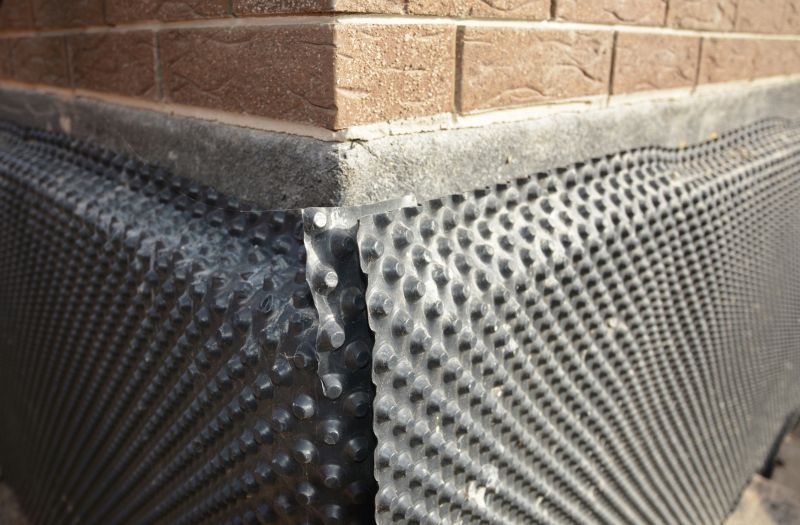Top Waterproofing Products for Reliable Protection
Discover the leading waterproofing solutions designed to safeguard your structures from water damage and ensure durability.
 Waterproofing products are essential for protecting structures, foundations, and surfaces from water intrusion and damage. These products come in various forms, including liquid membranes, sealants, coatings, and membranes designed to create a barrier against moisture. Proper selection and application of waterproofing materials can help prevent issues such as leaks, mold growth, and structural deterioration, especially in areas prone to water exposure like basements, roofs, and exterior walls.
Waterproofing products are essential for protecting structures, foundations, and surfaces from water intrusion and damage. These products come in various forms, including liquid membranes, sealants, coatings, and membranes designed to create a barrier against moisture. Proper selection and application of waterproofing materials can help prevent issues such as leaks, mold growth, and structural deterioration, especially in areas prone to water exposure like basements, roofs, and exterior walls.
Top Overall Option
Liquid Waterproofing Membrane
A versatile liquid membrane offers a seamless, flexible barrier that can be applied to a variety of surfaces, including roofs, foundations, and decks. It is easy to apply with brushes, rollers, or sprayers and can accommodate surface irregularities, making it suitable for complex projects. When properly applied, it provides a continuous layer that helps resist water infiltration and can be re-coated as needed for maintenance. Its adaptability and ease of use make it a popular choice for many waterproofing needs.
Types of Products For Waterproofings
Liquid Waterproofing Membranes
Fluid coatings that create seamless, flexible barriers suitable for various surfaces.
Sheet Membranes
Pre-formed sheets made from rubber, asphalt, or other materials, providing durable physical barriers.
Bituminous Coatings
Asphalt-based coatings that offer waterproofing for roofs and foundations with weather resistance.
Polyurethane Coatings
High-performance coatings that provide elastic, waterproof layers for roofs and decks.
Cementitious Waterproofing
Waterproofing materials mixed with cement for use on walls and basements.
Liquid Rubber Coatings
Elastomeric coatings that form flexible, waterproof layers for various surfaces.
Acrylic Waterproof Coatings
Water-based coatings suitable for exterior surfaces needing flexible waterproofing.
Bitumen Roll Roofing
Rolled asphalt products often used on flat roofs for waterproof protection.
Sealants and Caulks
Flexible compounds used to seal joints, cracks, and gaps against water infiltration.
Hydrostatic Waterproofing Systems
Specialized systems designed to resist pressure from water in basements and below-grade applications.
Waterproofing Paints
Paint formulations that provide a water-resistant coating for walls and surfaces.
Crystalline Waterproofing
Chemical treatments that penetrate concrete and form waterproof crystals inside the material.
Popular Choices
Widely used for their versatility and seamless application across various surfaces.
Commonly selected for foundational and roofing applications due to their durability.
Popular for their proven performance on flat roofs and underground structures.
Favored for decks and roofs requiring elastic, long-lasting protection.
Essential for sealing joints and cracks in many waterproofing projects.
Preferred in below-grade applications where water pressure is a concern.
Often selected for basement walls and water tanks due to ease of application.
Popular for their flexibility and strong adhesion on various surfaces.
Chosen for exterior walls and surfaces requiring a flexible, water-resistant layer.
Growing in popularity for concrete waterproofing due to its deep penetration.
When considering waterproofing solutions, it is important to evaluate the specific needs of the project, including the type of surface, the level of water exposure, and the environmental conditions. For instance, basement waterproofing might require different products compared to roof coatings or outdoor paving. Durability, ease of application, and compatibility with existing materials are also key factors to keep in mind.
Applying waterproofing products correctly is crucial for achieving effective results. Surface preparation, such as cleaning and priming, often plays a significant role in ensuring proper adhesion and performance. Regular maintenance and inspection can extend the lifespan of waterproofing systems, helping to identify and address potential issues before they escalate.
In the Wooster, OH area, homeowners and contractors often seek reliable waterproofing solutions to safeguard properties against the local climate and weather patterns. Selecting the right products involves understanding the specific characteristics of each type, from liquid coatings that form seamless barriers to sheet membranes that provide robust physical protection. With a wide variety of options available, informed choices can lead to long-lasting and effective waterproofing outcomes.
Key Buying Considerations
- Determine the specific area or surface that needs waterproofing, such as roofs, basements, or decks.
- Assess the level of water exposure and pressure to select appropriate products.
- Consider the compatibility of the waterproofing material with existing surfaces and materials.
- Evaluate the ease of application, including whether the product can be applied with brushes, rollers, or sprayers.
- Check the durability and flexibility of the product to accommodate surface movements and temperature changes.
- Review the curing time and whether the product requires special conditions during application.
- Ensure the product provides a continuous, seamless barrier to prevent water leaks.
- Look into maintenance requirements and re-coating options for long-term performance.
- Consider environmental conditions such as temperature ranges and UV exposure that may affect product performance.
- Verify if the product is suitable for below-grade or above-grade applications, depending on needs.
- Assess the waterproofing system’s resistance to chemicals, salts, or other environmental factors if relevant.
- Review safety instructions and handling procedures to ensure proper application.
- Check for compatibility with other construction or repair materials being used.
- Estimate the overall project budget and compare costs across different product options.
- Research product reviews and manufacturer reputation for reliability and support.
